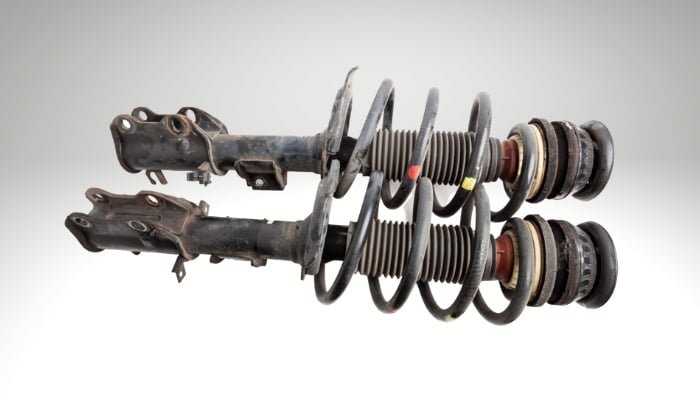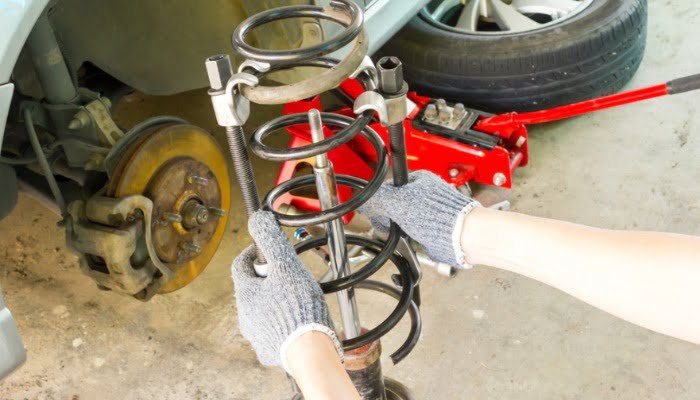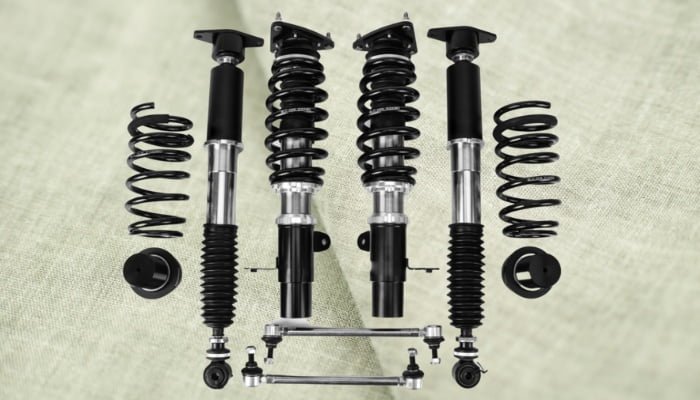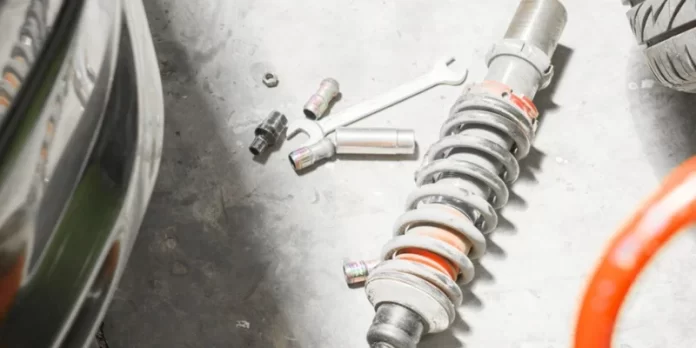Struts are essential components of your vehicle’s suspension system. They are the main force absorbers that are responsible for providing a smooth and comfortable ride.
This part is designed to support the weight of the vehicle and absorb the impact of driving over bumps and potholes; providing a cushion between the car’s body and the road surface, allowing your car to remain steady and balanced while driving.
It is essential you understand the role that struts play in keeping a vehicle’s suspension system in top condition, and how relevant they are to your vehicle…
What are Struts?
A strut is a suspension component connecting the wheels to the rest of the vehicle. A strut’s primary function is to support the car and absorb impacts from bumps, potholes, and other road irregularities.
In addition to supporting the weight of the vehicle, struts also help to keep the body of the vehicle from rolling or pitching too much when cornering or going over bumps.
By doing so, they help to improve the handling and ride quality of a vehicle. Struts can also stiffen up a vehicle’s body, which can improve its overall performance.
Struts are solid, supportive structures that are often used in engineering, aviation, construction, and cars. They typically work by preventing longitudinal compression (squeezing together), although they can also be used in tension (stretching apart).
The MacPherson strut is a common type of automotive suspension strut seen in vehicles.
Like a sliding pillar suspension, a MacPherson strut combines the fundamental functions of a shock absorber with the ability to carry sideways loads away from its axis of compression.

What is a Strut on a Car?
Struts are those parts of your car’s suspension system that gives you a comfortable, secure ride by firmly anchoring the wheels to the terrain while you drive.
You might not know this, but struts significantly impact how well you can control your automobile. Steering and braking are much simpler when the wheels aren’t bouncing around.
It’s crucial to change your struts as soon as possible if they begin to break.
The front and rear of your vehicle contain struts that link each wheel to its corresponding axle. Bushings and other suspension components connect the chassis or frame of your automobile to these axles.
Therefore, these struts must perform as intended because you need to be able to steer your vehicle effectively!
A spring and a shock absorber are the two essential components that make up an entire strut assembly. (The term “strut” is sometimes used to refer to the whole assembly, including the spring, and other times it simply refers to the shock absorber section).
The spring, which maintains the vehicle’s weight and absorbs significant bumps, is usually a coil spring (i.e., one fashioned like a spiral).
The strut bears some or all of the vehicle’s weight and is installed above, below, or directly down the middle of the coil spring.
However, its primary purpose is the same as any shock absorber, which is to reduce vibrations.
Contrary to its name, a shock absorber does not absorb shock; rather, it prevents the vehicle from bouncing after a bump.
A strut has to be substantially more potent than a typical shock absorber because it bears weight.

Does my car have Shocks or Struts?
It is important not to confuse struts and shocks as they serve different purposes in a vehicle. While struts replace the conventional suspension system’s upper control arm and upper ball joint, shocks are designed to keep the automobile from bouncing.
Most cars are equipped with either shocks or struts in each wheel, but never both.
However, it is possible for your front wheels to have struts while your back wheels have shocks.
Assessing how they normally appear will allow you to determine whether your car has struts or shocks. Shocks are usually vertical and made of springs or hydraulics.
Struts are often located underneath and can be difficult to find.
Most modern vehicles have struts in the front suspension. The rear strut, which is mounted in an upright position, helps the truck turn and absorb the impact from the road.
You might find struts and shocks used together in some cars, or your car might only have struts.
Therefore, it can be difficult to determine if a car has struts or shocks just by looking at how much damping it offers.
The best way to distinguish between these parts is to look at the bottom of the absorber. If you see coil springs, then it’s a shock. If you don’t see coil springs, then it’s a strut.
If only one bolt is holding it in place, then your car has shocks, not struts. If your car has an upper control arm, then there will also be a shock present.
If the bottom portion connects directly to the steering knuckle, then it is a strut. Another indicator that it is a strut is if the absorber is fastened to a tie rod.

How many Struts does a car have?
Most automobiles and SUVs today have shock absorbers in the back and struts on the front wheels – two in the front and two in the back. The rear struts support the weight of the trunk and back seat while the front struts support the weight of the engine and transmission.
Struts play an important role in a car’s suspension system, providing support and stability while also absorbing any force from road imperfections. In some cases, a car might have four-wheel struts but more commonly, it will have four shocks – although this is less usual.
However, not all automobiles have struts; some vehicles are designed with a suspension system that doesn’t require struts.
Final thoughts
Your car has either shock absorbers or struts in each wheel. No two cars have both types.
That means you can’t choose your car based on whether its suspension features struts or shocks. However, you can always ensure its suspension is in good shape by examining its strut and shock assemblies.
Depending on the type of suspension system utilized, your car might have one upper control arm, one lower control arm, and one lower ball joint.
This setup would be known as a double unit (DU) on the front axle. If your car has a single unit in the back, it’s a single unit (SU), and vice versa.



